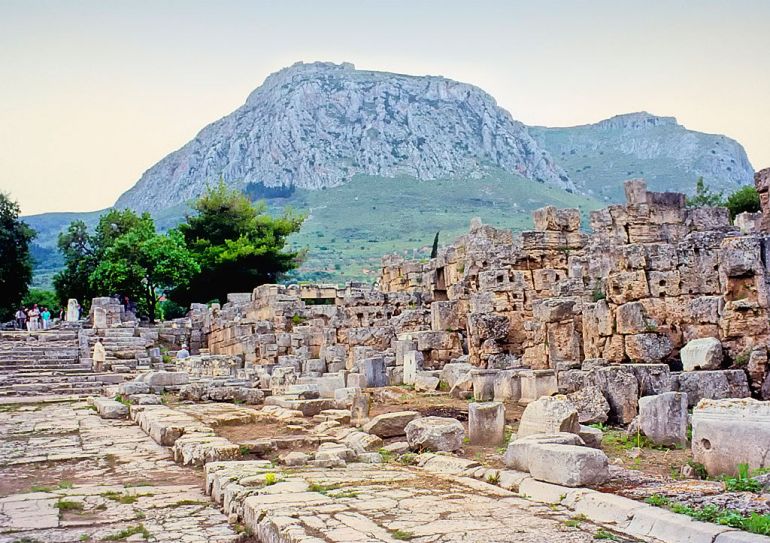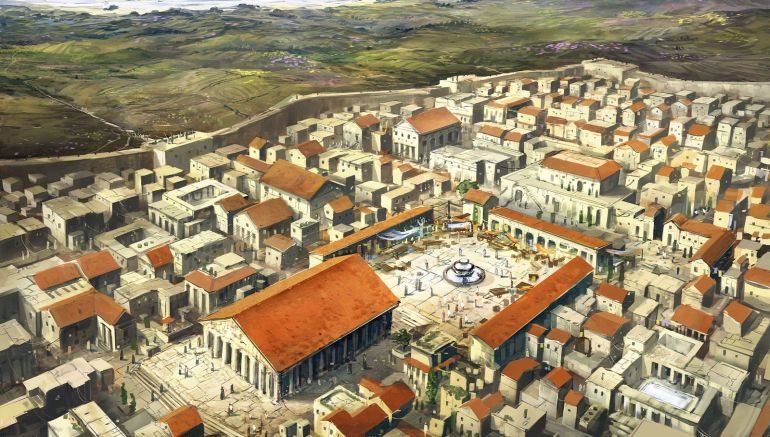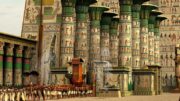Ancient Corinth was one of the most powerful and important of the Greek city-states, with the settlement itself boasting a population of over 90,000 during the 5th century BC. Guarding the isthmus which connects mainland Greece with the Peloponnese, the strategic location of the city manifested itself throughout its history, with commerce, trade, navies, and wars playing their crucial roles in the Corinthian scheme of things.
The unique geography of the city (with fertile lands and natural springs) even enticed the later Romans, who destroyed the original settlement after their victory over the Achaean League in 146 BC. And Julius Caesar was then instrumental in ‘re-founding’ Colonia Laus Iulia Corinthiensis (‘colony of Corinth in honor of Julius’) circa 44 BC, thus leading to its subsequent revival as the provincial capital of Achaia.
Considering all these dynamic historical factors, animator extraordinaire Danila Loginov has virtually conceived the ancient version of Corinth, circa 2nd century AD. He goes on to provide a short summary of his recreation –
Reconstruction of ancient Corinth city as it was in II century AD, in Roman Empire ages. It contains the whole city, the central part with Agora, temple of Apollon, theater and Odeon, and also hippodrome, gymnasium, temple of Asclepius and amphitheater. Near the city is Acrocorinth mountain with fortress and temples.
Pertaining to these representations, from the archaeological perspective, the surviving structures of ancient Corinth mostly comprised Roman buildings harking back to the 1st-2nd century AD. As Mark Cartwright (in Ancient Encyclopedia) has described the archaeological scope of the original Greek city –
The majority of the other surviving buildings date from the 1st century AD in the Roman era and include a large forum, a temple to Octavia, baths, the Bema where St. Paul addressed the Corinthians, the Asklepeion temple to Asclepius, and a center of healing, fountains – including the monumental Peirine fountain complex (2nd century AD) – a propylaea, theater, odeion, gymnasium, and stoas. There are also the remains of three basilicas.
Archaeological finds at the site include many fine mosaics – notably the Dionysos mosaic – Greek and Roman sculpture – including an impressive number of busts of Roman rulers – and outstanding examples of all the styles of Greek pottery, the first source of the city’s fame in the ancient world.
The Biblical Scope –
The city of Corinth has quite a few mentions in the New Testament, mostly relating to the mission of Paul the Apostle. According to Biblical sources, Paul spent over 18 months in the city, circa 51-52 AD, and was witness to a large number of the Jewish population, along with Greeks in the region.
This scope possibly alludes to the revived cosmopolitan nature of Corinth, especially after Caesar altered the distribution of agricultural lands in the forms of organized parcels known as centuriation. In any case, in the vicinity of the city, Paul went on to successfully defend himself in a public hearing, against the charges of his preaching subverting the Mosaic Laws.
The Acrocorinth –

And lastly, the animator also fleetingly mentioned (and showcased) the so-named Acrocorinth or Ακροκόρινθος (in Greek). Translating to ‘Upper Corinth’, this monolithic rock was the acropolis of Corinth, a fortified space that was inhabited since archaic times, much like its Athenian counterpart.
And interestingly enough, the Acrocorinth played its crucial defensive role in the medieval centuries – when it was comprehensively reinforced by the Eastern Roman (Byzantine) Empire, and thus became the fortress seat of the strategos of the Hellas thema.
Video Source: Danila Loginov (YouTube) / Featured Image Credit: jbrown67 (DeviantArt)
Article Sources: Ancient Encyclopedia / The Corinth Computer Project (University of Pennsylvania)





Be the first to comment on "Brilliant Reconstruction of Greek Corinth During the Roman Period"